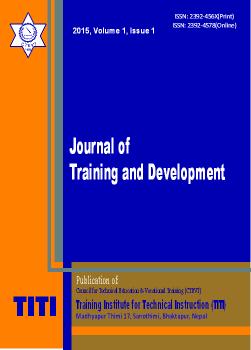Understanding Nuances and Commonalities of Job Descriptions
DOI:
https://doi.org/10.3126/jtd.v1i0.13093Keywords:
Job description, job analysis, performance expectations, performance appraisalAbstract
This paper has explored how job descriptions are developed in today’s organizations. As job descriptions are the foundations of jobs, they have to be prepared following certain guidelines. However, organizations follow different formats and put contents in those formats differently. This paper has searched for if there is a common ground in developing job descriptions. The paper is based on secondary sources of data. It compares and contrasts information from the available sources. The paper is an attempt to consolidate the pieces of knowledge that were already there. In doing so, it has also highlighted the gaps found in writing job descriptions which become remarkable avenues for further research. It concludes with the message that organizations can benefit if they follow the common practice of writing job descriptions discussed in the paper.
DOI: http://dx.doi.org/10.3126/jtd.v1i0.13093
Journal of Training and Development Vol.1 2015: 67-76
Downloads
Downloads
Published
How to Cite
Issue
Section
License
Authors who publish with this journal agree to the following terms:
- Authors retain copyright and grant the journal right of first publication with the work simultaneously licensed under a Creative Commons Attribution License that allows others to share the work with an acknowledgement of the work's authorship and initial publication in this journal.
- Authors are able to enter into separate, additional contractual arrangements for the non-exclusive distribution of the journal's published version of the work (e.g., post it to an institutional repository or publish it in a book), with an acknowledgement of its initial publication in this journal.
- Authors are permitted and encouraged to post their work online (e.g., in institutional repositories or on their website) prior to and during the submission process, as it can lead to productive exchanges, as well as earlier and greater citation of published work (See The Effect of Open Access).




